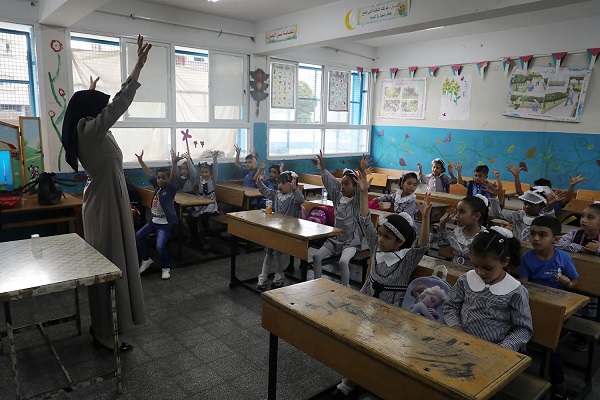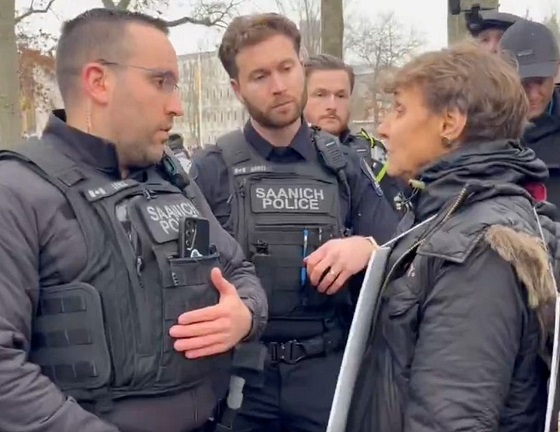Alberta
Notes from Flight 163, the oilsands shuttle from Toronto to Edmonton

Shared with permission from author Stewart Muir
Stewart Muir is a Victoria-based writer who serves as executive director of the Resource Works Society.
On a recent Monday morning, I found myself on Air Canada Flight 163 from Toronto Pearson to Edmonton. As the plane loaded, I began to sense there was something not so regular about the passengers boarding the Airbus 320 for a regularly scheduled flight.
Unlike those I more typically see on my flights, nobody was in flip-flops or golf wear, or fussing with oversized or unnecessary luggage. This was a mix mostly without the easy-to-spot snowbirds, students, and first-time fliers.
The travellers this day were mostly middle-aged men, fit-looking and dressed Mark’s Work Wearhouse casual. There were some women too, and like the men they moved with familiar ease through the cabin lugging full but neatly packed backpacks or duffels. Many carried a preferred travel distraction in hand, ready for a few hours of Netflix or sudoku. I could hear the distinctive accents of the Maritimes and Quebec, and the more familiar central Canadian English, as they found their places the way transit riders enter a subway car.
It was rapidly apparent that I was witnessing a commuter routine, one not meaningfully different than the suit-filled shuttles carrying day-tripping lawyers, accountants, pharma reps, engineers and lobbyists from the same airport that morning to destinations like Ottawa, Montreal, Boston and New York.
In concentrated form, I was witnessing a typical, daily migration of the Canadian oil sands workforce, probably with some LNG and mining thrown in. They were heading to the workplace. Not for a day, but for stretches of a week or two.
Multiply this by dozens or scores, in airports across the country, usually less starkly evident than on this particular flight, and it was just a regular day in Canadian air travel as the massive energy employee base changed shift.
A few hours later, after we unloaded at the other end, I headed for the exit and my Uber. Not so most of my fellow passengers. They continued on their way to connecting flights – to destinations such as Fort McMurray, Grande Prairie, and air services flying direct to some of the big oil sands projects – in time for shift change at the work camps where they were expected.
Statistics could not convey more forcefully than this how the oil & gas economy has a singular and powerful effect on the economy. The large paycheques drawing these men and women to their jobs in the West flowed directly back to their family bank accounts in the GTA and beyond, paying mortgages, grocery bills, taxes and hockey fees.
Flight 163, multiplied many times over, represents what the energy sector, at its most direct and tangible, does for the Canadian economy.
This is what I’m thinking about while surveying a nation that is now deep into an unprecedented social and economic crisis.
Over the coming days and weeks, things that we do will affect how deep and damaging this crisis becomes.
We are seeing Green New Deal advocates pursue the thesis that the coming economic catastrophe is the perfect moment to “transition off fossil fuels”. There are plenty of signs of this thought process – “Hey guess what guys, in one stroke we could meet the Paris Agreement by dropping emissions to 30 per cent below 2005 levels – not by 2030, but by 2021!”
To put this in perspective, consider that the Conference Board of Canada recently estimated that in one of the milder transition scenarios, meeting such targets will cost Canadians $2.2 trillion and require 14 per less use of residential energy, 47 per cent less car travel, eight times the subway use, and 54 per cent less domestic air travel.
Who’s ready to make this change overnight? We couldn’t do it if we wanted to. Think for just a moment about the costs and tradeoffs required, and the difficulty of accomplishing it in the midst of a global health crisis. Clearly it makes no sense at all. Yet Canada might be the only oil-exporting country where accelerating the transition is likely to receive serious acknowledgment in senior decision-making circles.
Even without such measures, Canada is already moving in the right direction: we are a global leader in clean energy, with 80 per cent of the population living in provinces where more than 90 per cent of electricity is drawn from non-fossil fuel sources. This alone makes us the envy of the world. The prevalence of clean electricity means that wherever it is used in industry, the resulting resource commodity exports can outcompete most other similar products in climate terms, with the bonus that they can allow importing countries to reduce their own emissions.
Mere inattention could do as much damage at this time as a wrong decision. Standing back and watching the domestic oil and gas industry topple will have an effect on citizen wellbeing far in excess of what the collapse of any other industry would bring.
We would be looking at the long-term impairment of Canadian living standards – that is to say a reduction in the value of our jobs, in our quality of life, in our educational opportunities, and in our ability to help other countries while continuing as a net positive influence on the world.
The fossil fuel industry – “it is how we earn our living”
It’s hard to describe how important the energy industry is to Canada. Let me try.
Andy Calitz, the former CEO of LNG Canada who performed the herculean task of achieving a positive final investment decision (FID) for the project before moving on to his next challenge, provided a memorable image when he spoke at a small dinner of diplomats and academics I attended not long after the FID.
When the first shipload of liquefied natural gas departs from Kitimat in a few years’ time, he said, that cargo would be worth $100 million – a staggering sum. (I’ve run this figure past a couple of experienced heads in the energy field, and nobody has scoffed at it.)
In Vancouver, we go giddy each spring at the thought of cruise ship season, which last year saw 290 sailings out of the port. If, as is commonly said, one of those sailings means $1 million injected into the local economy, how does that compare with LNG?
Back of envelope math says that a single year of LNG Canada operations, with its promised traffic of one ship in and one ship out every day, will have the impact of one century of the Vancouver cruise industry. I’m not knocking the cruise industry, it’s important and we need it. But let that comparison sink in.
Here’s another one.
Back in 2017, I calculated that natural gas investments in British Columbia that year were on a scale that equated to building the behemoth Wynn hotel in Las Vegas (4,750 rooms over 215 acres) in the Vancouver area, along with a special SkyTrain extension to serve it. ( Natural gas is back: British Columbia drilling surge is behind $5+ billion in 2017 investment )
Never mind that no investor has ever come forward with such a bold plan for a new resort anywhere in Canada. And it’s actually pretty fortunate that we got the energy infrastructure rather than the casino, given the prospects for tourism in 2020.
Economist Patricia Mohr recently pointed out that Canada is “a trading nation and an ‘energy specialist’ — it is how we earn our living.” Crude oil, all by itself, generated net exports of $62 billion in 2019, up from $57.5 billion in 2018 — far above any other export category.
As Ms. Mohr stated, oil exports come in handy given that we habitually run large deficits in other areas including motor vehicles and parts, machinery, electronic equipment, and consumer goods.
During the COVID-19 crisis, it’s obvious we cannot go without lifesaving medical necessities. Unlike our abundant oil, producing them isn’t a great strength. Canada must import billions’ worth of these goods every year. If you isolate just three medical categories – vaccines, medical apparatus and breathing aids – the numbers show clearly that our own ability to manufacture these items is very limited, even as consumption grows year after year.

The current global crisis has already brought a plummeting Canadian dollar, which in turn makes the imported goods that we rely on more costly. Exports that we can sell for U.S. dollars will offset this, but only if we have products to sell and markets ready to buy them. We need to preserve the ability to produce more as more income is needed, while at the same time figuring in the unfortunate reality that many of the things we export are themselves falling in price, so that higher production volumes are required just to stay in place.
The resource economy actually turns out – despite its detractors – to be both flexible and durable as a source of national well-being. Markets for some of the commodities we produce can be expanded at will, something that cannot be said of iPhones, beach umbrellas or BMWs.
Right now in Russia, the government is starting to realize it might not have been such a good idea to enter into an oil price war with Saudi Arabia. More and more evidence suggests that for a winner to emerge will require not months but years of effort, and at the end of it the United States oil industry, resented deeply by both Russia and Saudi Arabia, could well come on top anyways.
The most chilling observation, as reported today by the Wall Street Journal, comes from Igor Sechin, head of Russia’s largest oil producer, state-controlled giant Rosneft: “If you give up your market share, you will never get it back.”
There’s a lesson in this for Canada. Those who see an “opportunity” to deliberately give up our oil market share, to encourage a fast pivot into an unknown energy future, are playing recklessly with how we as a country earn our living. If we ratchet down production by letting industry fail, and decide later that it was a mistake to do so, we will not easily be able to retrieve our market share. That’s a frightening thought. Worse still, killing off the industry will make Canadians more dependent on imported oil, which will have to be paid for using a weakened loonie.
Doing what’s necessary
In 2018, the federal government announced an export diversification strategy that would increase Canada’s overseas exports by 50 per cent by 2025. Even before the combined oil/pandemic crisis, it seemed an unlikely ambition.
“Investing in infrastructure to support trade” was one of the ways Ottawa deemed it could aid this ambitious goal, and credit is due for supporting projects such as the so-far-incomplete Trans Mountain and Coastal GasLink pipelines.
Other forces are holding us back. The Canada Infrastructure Bank, for example, is forbidden from investing its $35 billion of capital in fossil fuel projects, even if those investments could lead to lower energy use and emissions in the oil & gas upstream.
Meanwhile, our national infrastructure minister seems physically incapable of uttering the phrase “energy infrastructure” let alone the p-word (pipelines). Even our minister of natural resources has been placed in the uncomfortable position of carrying out a mandate letter requiring him to making finding alternative employment for oil and gas workers and communities a central task.
Now is the time to save, not strangle, an oil and gas industry that is frantically signalling the need for intervention .
Prime Minister Justin Trudeau’s Quebec lieutenant Pablo Rodriguez yesterday promised Bombardier : “Our government is taking the necessary steps to get you financial help as quickly as possible.” A stock analyst opined that the Canadian and Quebec governments were “likely to offer support if Bombardier gets close to the edge.” (See Globe and Mail story .)
If a single company controlled by a wealthy clan, making luxury jets for billionaires, is to be given this treatment, then there should be no hesitation all in backing the industry that convincingly represents the foundational strength of our entire nation.
Trudeau has always found it difficult to make strong gestures of support to the Canadian oil patch. This time, finding it within himself to say those words of support matters more than ever. There is a very serious risk that Canada’s long term prosperity in both an absolute and a relative sense will be impaired by what occurs in the coming hours, days and weeks. Ahead of us, economic success will only come through determination and political commitment to put people and jobs first.
Stewart Muir is a Victoria-based writer who serves as executive director of the Resource Works Society.
Grow your business with the Daily Oil Bulletin – the trusted source for Canada’s oilpatch.
Canada in talks with the U.S. to avoid troops at the border, says Trudeau
Alberta Energy Regulator names senior Saskatchewan government official as CEO
Alberta
Here’s why city hall should save ‘blanket rezoning’ in Calgary

From the Fraser Institute
By Tegan Hill and Austin Thompson
According to Calgarians for Thoughtful Growth (CFTG)—an organization advocating against “blanket rezoning”— housing would be more affordable if the mayor and council restricted what homes can be built in Calgary and where. But that gets the economics backwards.
Blanket rezoning—a 2024 policy that allowed homebuilders to construct duplexes, townhomes and fourplexes in most neighbourhoods—allowed more homebuilding, giving Calgarians more choice, and put downward pressure on prices. Mayor Farkas and several councillors campaigned on repealing blanket rezoning and on December 15 council will debate a motion that could start that process. As Calgarians debate the city’s housing rules, residents should understand the trade-offs involved.
When CFTG claims that blanket rezoning does “nothing” for affordability, it ignores a large body of economic research showing the opposite.
New homes are only built when they can be sold to willing homebuyers for a profit. Restrictions that limit the range of styles and locations for new homes, or that lock denser housing behind a long, costly and uncertain municipal approval process, inevitably eliminate many of these opportunities. That means fewer new homes are built, which worsens housing scarcity and pushes up prices. This intuitive story is backed up by study after study. An analysis by Canada’s federal housing agency put it simply: “higher residential land use regulation seems to be associated with lower housing affordability.”
CFTG also claims that blanket rezoning merely encourages “speculation” (i.e. buying to sell in the short-term for profit) by investors. Any profitable housing market may invite some speculative activity. But homebuilders and investors can only survive financially if they make homes that families are willing to buy or rent. The many Calgary families who bought or rented a new home enabled by blanket rezoning did so because they felt it was their best available option given its price, amenities and location—not because they were pawns in some speculative game. Calgarians benefit when they are free to choose the type of home and neighbourhood that best suits their family, rather than being constrained by the political whims of city hall.
And CFTG’s claim that blanket rezoning harms municipal finances also warrants scrutiny. More specifically, CFTG suggests that developers do not pay for infrastructure upgrades in established neighbourhoods, but this is simply incorrect. The City of Calgary charges an “Established Area Levy” to cover the cost of water and wastewater upgrades spurred by redevelopment projects—raising $16.5 million in 2024 alone. Builders in the downtown area must pay the “Centre City Levy,” which funds several local services (and generated $2.5 million in 2024).
It’s true that municipal fees on homes in new communities are generally higher, but that reflects the reality that new communities require far more new pipes, roads and facilities than established neighbourhoods.
Redeveloping established areas of the city means more residents can make use of streets, transit and other city services already in place, which is often the most cost-effective way for a city to grow. The City of Calgary’s own analysis finds that redevelopment in established neighbourhoods saves billions of taxpayer dollars on capital and operating costs for city services compared to an alternative scenario where homebuilding is concentrated in new suburban communities.
An honest debate about blanket rezoning ought to acknowledge the advantages this system has in promoting housing choice, housing affordability and the sustainability of municipal finances.
Clearly, many Calgarians felt blanket rezoning was undesirable when they voted for mayoral and council candidates who promised to change Calgary’s zoning rules. However, Calgarians also voted for a mayor who promised that more homes would be built faster, and at affordable prices—something that will be harder to achieve if city hall imposes tighter restrictions on where and what types of homes can be built. This unavoidable tension should be at the heart of the debate.
CFTG is promoting a comforting fairy tale where Calgary can tighten restrictions on homebuilding without limiting supply or driving up prices. In reality, no zoning regime delivers everything at once—greater neighbourhood control inevitably comes at the expense of housing choice and affordability. Calgarians—including the mayor and council—need a clear understanding of the trade-offs.
Alberta
The case for expanding Canada’s energy exports

From the Canadian Energy Centre
For Canada, the path to a stronger economy — and stronger global influence — runs through energy.
That’s the view of David Detomasi, a professor at the Smith School of Business at Queen’s University.
Detomasi, author of Profits and Power: Navigating the Politics and Geopolitics of Oil, argues that there is a moral case for developing Canada’s energy, both for Canadians and the world.
CEC: What does being an energy superpower mean to you?
DD: It means Canada is strong enough to affect the system as a whole by its choices.
There is something really valuable about Canada’s — and Alberta’s — way of producing carbon energy that goes beyond just the monetary rewards.
CEC: You talk about the moral case for developing Canada’s energy. What do you mean?
DD: I think the default assumption in public rhetoric is that the environmental movement is the only voice speaking for the moral betterment of the world. That needs to be challenged.
That public rhetoric is that the act of cultivating a powerful, effective economic engine is somehow wrong or bad, and that efforts to create wealth are somehow morally tainted.
I think that’s dead wrong. Economic growth is morally good, and we should foster it.
Economic growth generates money, and you can’t do anything you want to do in social expenditures without that engine.
Economic growth is critical to doing all the other things we want to do as Canadians, like having a publicly funded health care system or providing transfer payments to less well-off provinces.
Over the last 10 years, many people in Canada came to equate moral leadership with getting off of oil and gas as quickly as possible. I think that is a mistake, and far too narrow.
Instead, I think moral leadership means you play that game, you play it well, and you do it in our interest, in the Canadian way.
We need a solid base of economic prosperity in this country first, and then we can help others.
CEC: Why is it important to expand Canada’s energy trade?
DD: Canada is, and has always been, a trading nation, because we’ve got a lot of geography and not that many people.
If we don’t trade what we have with the outside world, we aren’t going to be able to develop economically, because we don’t have the internal size and capacity.
Historically, most of that trade has been with the United States. Geography and history mean it will always be our primary trade partner.
But the United States clearly can be an unreliable partner. Free and open trade matters more to Canada than it does to the U.S. Indeed, a big chunk of the American people is skeptical of participating in a global trading system.
As the United States perhaps withdraws from the international trading and investment system, there’s room for Canada to reinforce it in places where we can use our resource advantages to build new, stronger relationships.
One of these is Europe, which still imports a lot of gas. We can also build positive relationships with the enormous emerging markets of China and India, both of whom want and will need enormous supplies of energy for many decades.
I would like to be able to offer partners the alternative option of buying Canadian energy so that they are less reliant on, say, Iranian or Russian energy.
Canada can also maybe eventually help the two billion people in the world currently without energy access.
CEC: What benefits could Canadians gain by becoming an energy superpower?
DD: The first and primary responsibility of our federal government is to look after Canada. At the end of the day, the goal is to improve Canada’s welfare and enhance its sovereignty.
More carbon energy development helps Canada. We have massive debt, an investment crisis and productivity problems that we’ve been talking about forever. Economic and job growth are weak.
Solving these will require profitable and productive industries. We don’t have so many economic strengths in this country that we can voluntarily ignore or constrain one of our biggest industries.
The economic benefits pay for things that make you stronger as a country.
They make you more resilient on the social welfare front and make increasing defence expenditures, which we sorely need, more affordable. It allows us to manage the debt that we’re running up, and supports deals for Canada’s Indigenous peoples.
CEC: Are there specific projects that you advocate for to make Canada an energy superpower?
DD: Canada’s energy needs egress, and getting it out to places other than the United States. That means more transport and port facilities to Canada’s coasts.
We also need domestic energy transport networks. People don’t know this, but a big chunk of Ontario’s oil supply runs through Michigan, posing a latent security risk to Ontario’s energy security.
We need to change the perception that pipelines are evil. There’s a spiderweb of them across the globe, and more are being built.
Building pipelines here, with Canadian technology and know-how, builds our competitiveness and enhances our sovereignty.
Economic growth enhances sovereignty and provides the resources to do other things. We should applaud and encourage it, and the carbon energy sector can lead the way.
-
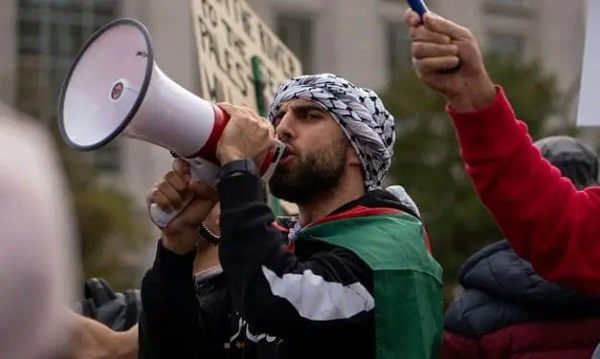
 National2 days ago
National2 days agoCanada’s free speech record is cracking under pressure
-
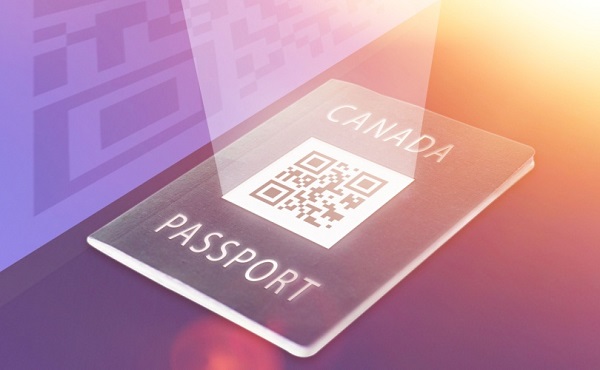
 Digital ID1 day ago
Digital ID1 day agoCanada considers creating national ID system using digital passports for domestic use
-

 Business2 days ago
Business2 days agoAlbertans give most on average but Canadian generosity hits lowest point in 20 years
-
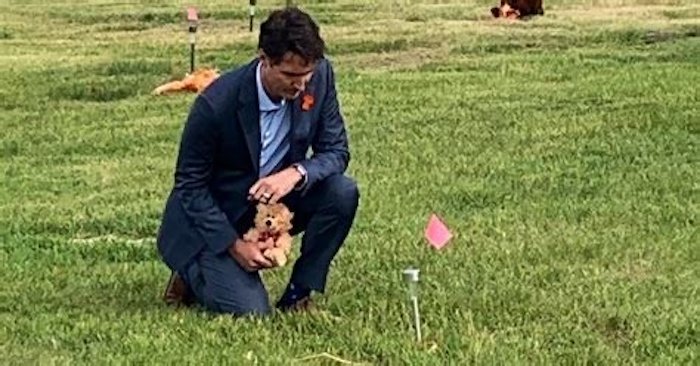
 Fraser Institute1 day ago
Fraser Institute1 day agoClaims about ‘unmarked graves’ don’t withstand scrutiny
-

 Business2 days ago
Business2 days agoTaxpayers Federation calls on politicians to reject funding for new Ottawa Senators arena
-

 International2 days ago
International2 days ago100 Catholic schoolchildren rescued, Nigeria promises release of remaining hostages
-

 Alberta1 day ago
Alberta1 day agoHere’s why city hall should save ‘blanket rezoning’ in Calgary
-

 Bruce Dowbiggin2 days ago
Bruce Dowbiggin2 days agoCarney Hears A Who: Here Comes The Grinch







